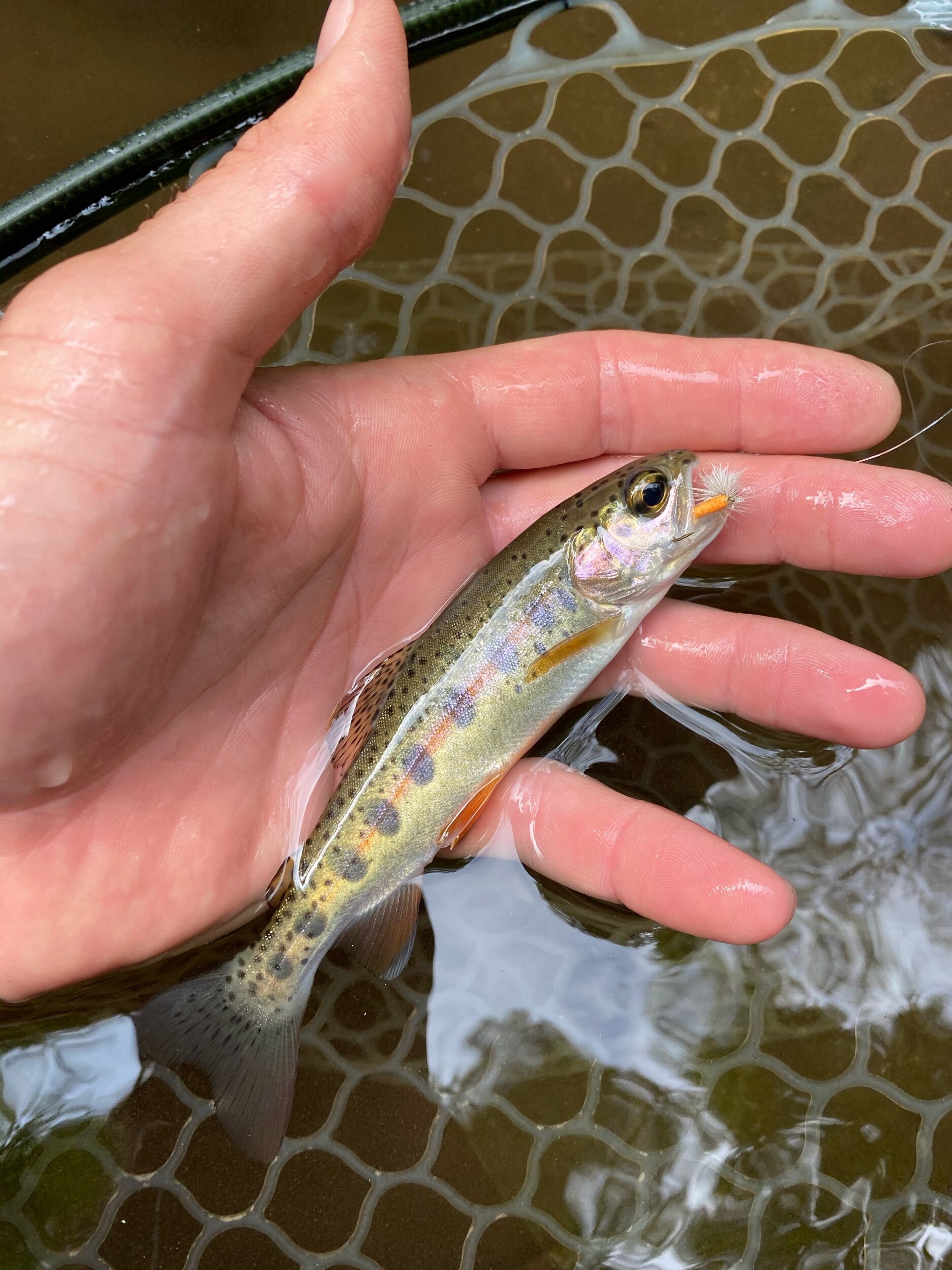Fly Fishing In the Pisgah National Forest
Here in western North Carolina we are blessed to have an abundant amount of healthy wild trout streams to explore. These cold water streams are an anglers paradise for throwing dry flies during the months of March through October.
Our guided trips for wild trout take us to beautiful areas that do not see much fishing pressure. The fish here are not big, but what they lack in size, they make up for in beauty. Most wild fish in the streams and creeks we guide on range anywhere from 6-10 inches. We use 7’6 rods which are ideal for making tight casts with overhead cover.
The old saying is “If you can cast here, you can cast anywhere”. Rhododendron and mountain laurel outline the streams which challenges even the most experienced casters. After a half or full day of fishing one of these streams your casts and accuracy drastically improve.
Catching wild trout on a dry fly is the epitome of fly fishing. It’s such a fun experience for clients because the eats are visual.
Curtis Creek, North Carolina
Wild rainbow trout was fooled into eating a dry fly.
Tips on catching wild trout on a dry fly
Be Stealthy: Wild trout are easily spooked so it’s important not to walk up on the head of the hole. Have a plan on how you will “pick apart” a hole before you start casting. Target the tail out of the hole before going to the head.
Use Appropriate Gear: Smaller rods and reels are better for these small mountain streams. I like to use a 7’6 three weight rod and reel. I normally use a 7 1/2 foot 4x leader. On some of the more spooky trout streams I’ll use a 9 foot 5x leader.
Choose the right fly. Wild trout are not too picky on eating dry flies as long as you get a drag free drift. My go to dry flies on our mountain streams are size 14-16 caddis and parachute adams. These dry flies ride well on top of the water and are easily seen. These flies will catch fish year round on wild trout streams.
Drag Free Drift: Achieving a drag free drift is vital to catching wild trout on a dry fly. Beginners love to make those long casts when starting out fly fishing but it’s not needed on wild trout streams. When guiding clients we learn the roll cast and only use about four to five feet of fly line. This amount is enough to roll the leader and fly over top itself. In faster moving water I teach clients how to raise there rod tip up after casting which picks the fly line and leader up off the water which eliminates drag.
Eliminating slack. Slack equals less hook-ups. Wild trout hit dry flies very quickly, so the less slack in your line the better off you will be when setting the hook. Too much fly line is overkill. Think, less is more. Keep your rod tip low and when the fly is drifting back to you pull the slack out of the line with your non dominant hand.
Ashley with a 10” wild rainbow trout.
The Harrison family has a blast on one of our local trout streams.
Husband and wife duo caught their first fish on the fly.
Complete solitude for Jaime.
Never too young to learn how to fly fish.
Mr. Hubbard tricked trout on a parachute caddis all day.
Healthy rainbow taken on a dry.
Book your wild trout trip today!










